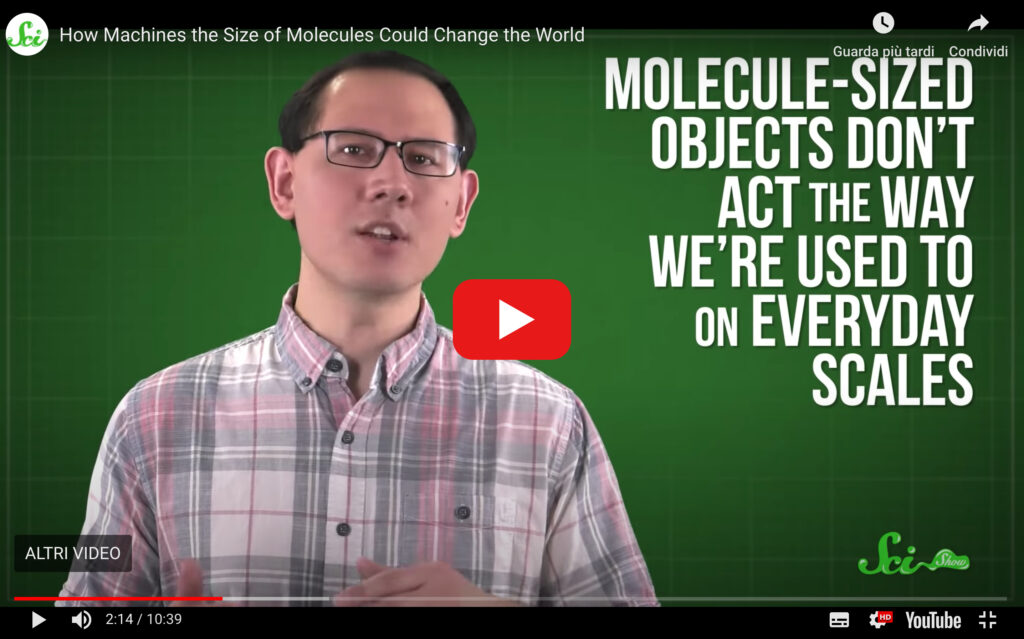4. A GLIMPSE INTO THE FUTURE
Nanomachines: what can they offer?
We have seen that in living organisms biomolecular machines perform a wide variety of functions in a timely and incessant manner. The crucial role entrusted by nature to these tiny devices is a compelling demonstration of their usefulness. Many scientists predict that artificial molecular machines will lead to innovative applications in several fields of technology and medicine. One can think, for example, that with nanomachines we will be able to construct materials whose properties adapt to external conditions, plastics capable of bending on command, mechanical nanoactuators, ultra-miniaturized memories and processors, nanometric probes capable of diagnosing diseases, intelligent drugs that become active only in the right place at the right time. Why then, despite the considerable progress made in the construction of molecular machines, have they not yet entered our everyday life?
First of all it must be reminded that biomolecular machines are extremely sophisticated systems, the result of evolutionary processes lasting millions of years. At present it is not possible to reproduce in the laboratory nanomachines of structural and functional complexity comparable to natural ones. We must also consider, however, that scientific and technological research is progressing at great speed: for example, the molecular machines that we know how to build to-day would have been practically unthinkable only thirty years ago.
After dealing with numerous fundamental questions, both conceptual and practical, research on nano-machinery has entered a phase of maturity, in which the attention of scientists is shifting from the demonstration of the validity of an idea (proof of principle) to the construction of useful devices, able to work in the real world.
In this section we will describe some recent studies that show how artificial molecular machines, properly organized among themselves and/or interfaced with the surrounding environment, are capable of performing functions of various kinds. The results of these experiments give hope that in the not too distant future nanomachines could really trigger a new industrial revolution.



